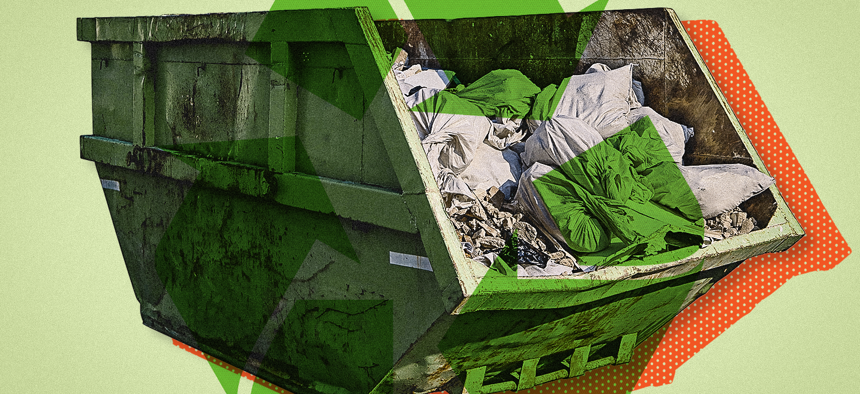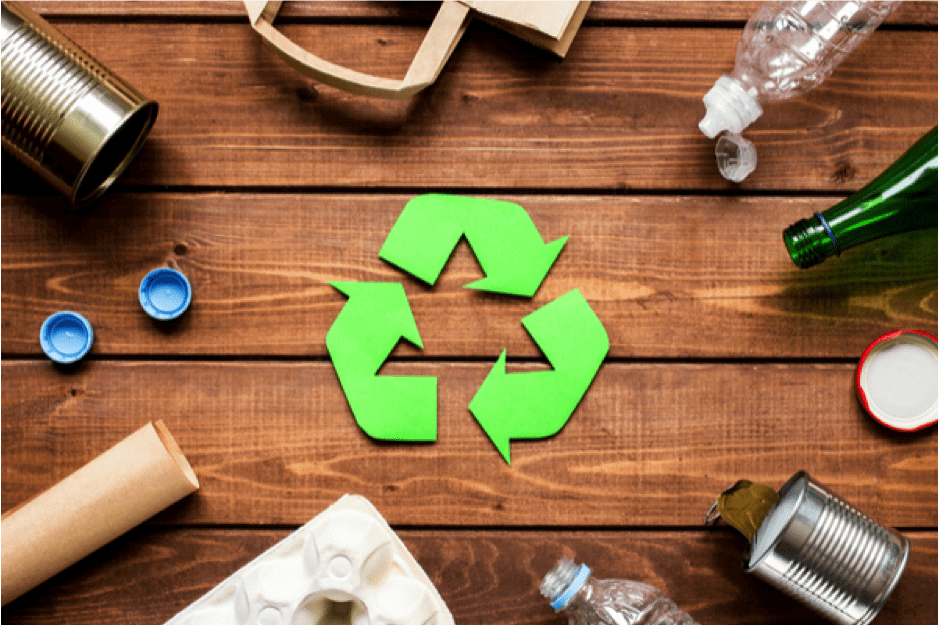Recycling Lives Services: Leading the Way in Liable Recycling
Recycling Lives Services: Leading the Way in Liable Recycling
Blog Article
Checking Out Different Kinds Of Waste in Modern Waste Administration Equipment
The contemporary landscape of waste management includes navigating a complicated array of waste types, each requiring specialized handling and disposal techniques to minimize environmental influences. Local solid waste, unsafe waste, digital waste, and organic waste each present unique difficulties and opportunities for resource recovery.
Local Solid Waste
Metropolitan solid waste, commonly described as household trash or trash, includes a selection of discarded products generated by residential, business, and institutional sources within a town. This waste stream commonly consists of things such as product packaging, food scraps, backyard trimmings, paper, plastics, textiles, and discarded family items. The management of metropolitan strong waste is an essential component of metropolitan planning and public health, demanding efficient collection, transportation, and disposal systems.
Reliable waste monitoring systems are made to lessen environmental influence while making the most of source recovery. Composting natural waste, such as food scraps and yard trimmings, not just reduces garbage dump usage however likewise produces important dirt modifications.
Municipalities have to likewise resolve the economic and logistical obstacles connected with waste management. Executing pay-as-you-throw systems, boosting public recognition, and buying modern technology can dramatically enhance waste diversion prices. By incorporating these techniques, districts can cultivate lasting areas, minimize greenhouse gas emissions, and save all-natural sources.
Contaminated Materials

Effective contaminated materials administration entails a number of essential steps: identification, segregation, disposal, and therapy. Recognition involves the classification of waste based on its hazardous residential properties. Segregation makes sure that dangerous materials are saved separately from non-hazardous waste to stop cross-contamination. Therapy approaches, such as chemical neutralization, incineration, and stabilization, are utilized to lower the toxicity, volume, or movement of the waste. Finally, disposal options, including secure garbage dumps and below ground storage, are selected to make sure long-lasting containment.
Regulatory structures, such as the Source Preservation and Recuperation Act (RCRA) in the United States, provide standards and standards for hazardous waste management. Adherence to these regulations, combined with improvements in waste therapy innovations, is important in alleviating the risks connected with contaminated materials.
Digital Waste
Electronic waste, frequently referred to as e-waste, represents a rapidly growing obstacle in waste management systems worldwide. This type of waste includes disposed of digital gadgets and tools such as mobile phones, computers, tvs, and other electronic home appliances. The rapid speed of technological improvement, coupled with reducing item life-spans and customer need for the current gadgets, has actually exponentially enhanced the volume of e-waste generated yearly.
E-waste is specifically bothersome as a result of its complicated structure, commonly including harmful substances like lead, cadmium, and mercury, which posture substantial ecological and wellness dangers otherwise correctly managed. On the other hand, e-waste likewise contains beneficial products such as copper, silver, and gold, which can be recouped and recycled. The double nature of e-waste-- both dangerous and valuable-- requires specialized handling, reusing, and disposal procedures.
Reliable e-waste administration entails rigid regulative structures, durable collection systems, and advanced reusing technologies. Public understanding and participation are important, as incorrect disposal techniques, such as unlawful discarding and casual recycling, worsen ecological contamination and health and wellness dangers. Enhancing e-waste administration practices is vital for alleviating eco-friendly impact and recouping useful resources in a progressively electronic globe.

Organic Waste
Organic waste, consisting of kitchen scraps, backyard trimmings, and agricultural deposits, represents a substantial section of the international waste stream. This sort of waste is eco-friendly, indicating it can be broken down by bacteria into less complex organic compounds. Despite its potential for natural decay, incorrect management of organic waste can result in adverse ecological impacts, including the discharge of greenhouse gases such as methane, which contribute to climate change.
Reliable monitoring of organic waste is critical for reducing these environmental effects (recycling lives services). Composting is an extensively taken on technique, transforming natural waste right into nutrient-rich garden compost that can boost soil health and wellness and browse around this web-site agricultural efficiency. Additionally, anaerobic food digestion is an emerging modern technology that transforms organic waste into biogas, a renewable resource source, and digestate, which can be utilized as fertilizer
Municipalities and waste administration entities need to execute robust organic waste collection and treatment programs to take full advantage of the advantages of these procedures. Public education projects can also play an essential duty in motivating homes and businesses to different natural waste from other kinds of waste. By prioritizing the monitoring of natural waste, cultures can lower landfill usage, reduced greenhouse gas emissions, and create beneficial byproducts for farming usage.

Innovative Waste Monitoring
In the world of waste management, cutting-edge techniques are changing just how cultures handle their refuse, aiming for sustainability and effectiveness. One prominent advancement is the execution of smart waste containers geared up with sensing units that monitor fill levels and enhance collection courses.
Another significant development is the adoption of waste-to-energy (WtE) modern technologies. By transforming non-recyclable waste into usable energy with processes such as incineration and anaerobic digestion, WtE minimizes garbage dump concern and provides a renewable resource resource. Improvements in chemical recycling allow for the break down of intricate plastics into their initial monomers, enabling the production of brand-new, premium plastic items.
Furthermore, the circular economic climate model is getting grip, emphasizing the design of items and systems that focus on reusability and source efficiency. This all natural technique encourages sectors to lessen waste generation from the beginning. With these innovative methods, modern-day waste monitoring systems are not just dealing with the immediate challenges of waste disposal but also leading the method for an extra sustainable future.
Conclusion
A detailed understanding of local strong waste, contaminated materials, digital waste, and organic waste, coupled with the implementation of innovative waste management services, is necessary for mitigating ecological effects. Incorporating innovations such as clever waste bins and waste-to-energy systems can improve performance and sustainability. Effective waste monitoring strategies not only foster resource page recovery yet additionally promote public recognition and engagement, inevitably adding to the growth of a circular economy.
The contemporary landscape of waste monitoring involves navigating an intricate range of waste types, each requiring specialized handling and disposal techniques to minimize environmental effects. Municipal strong waste, hazardous waste, digital waste, and organic waste each present unique difficulties and possibilities for resource recovery.Electronic waste, commonly referred to as e-waste, represents a swiftly expanding difficulty in waste administration systems internationally. With these ingenious approaches, modern waste administration systems are not just addressing the prompt difficulties hop over to here of waste disposal but likewise paving the method for a more lasting future.
A thorough understanding of municipal strong waste, unsafe waste, digital waste, and organic waste, coupled with the application of cutting-edge waste monitoring solutions, is crucial for alleviating ecological influences. (recycling lives services)
Report this page